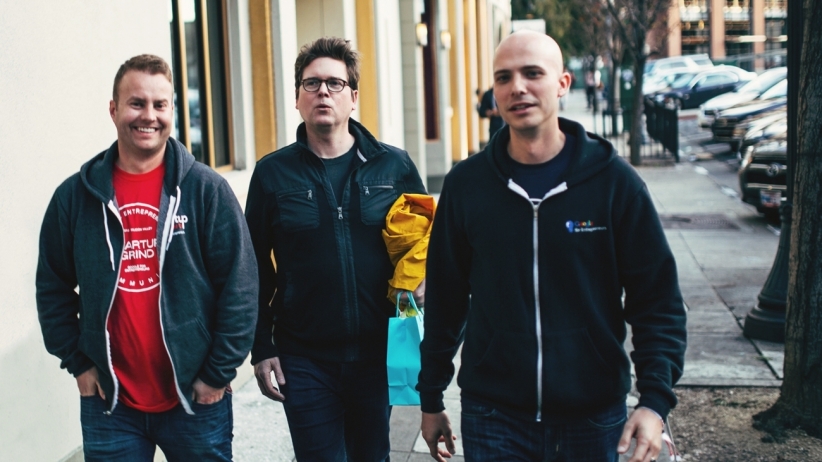As every entrepreneur knows, sometimes the first idea that comes to you isn’t the one that sticks. For Twitter’s Biz Stone, the journey toward the popular micro-blogging site was a long, adventure-filled one. Stone recently spoke at Startup Grind in Silicon Valley and talked all about how connections take place and how important they are.
Stone started as creative director for the social media network Xanga in New York City, where he initiated the site’s move into blogging. Believing in the value of the democratization of ideas, he was an avid enthusiast of successful blogging platform Blogger in its early days.
Through his active participation in the blogging community, Stone was introduced to Evan Williams, whose blog he read and admired. He began to realize he had more in common with Williams’ way of thinking than his own team at Xanga. When Google bought Blogger, Stone made the bold move of reaching out to Williams, telling him, “I feel like I’m the missing seventh member of your team.”
Capturing attention.
It’s an approach that many have tried without success. But Stone’s letter to Williams paid off. Williams replied with an offer of employment. Stone believes his passion for blogging showed through. While Stone had been reading Williams’ blog, Williams had been reading his, as well.
“We liked each other mutually and he felt like I was the missing member of his team, too,” Stone says. “He pulled a lot of strings at Google because back in 2003, they weren’t hiring dropouts who didn’t know anything about computer science. They were hiring Ph.Ds. in computer science.”
Follow the person, not the idea.
Stone has come to realize that every significant decision he’s ever made has been because he followed a person, not an organization or idea. By leaving New York for Silicon Valley, Stone aligned himself with the person who would serve as his partner in forming Twitter in 2006. But the two didn’t form Twitter overnight.
After Williams left Blogger, Stone realized he’d moved to Silicon Valley to work with Williams and left as well. Together, the two founded Odeo, a company that sought to do for audio what blogging had done for text. Over time, the two discovered podcasting wasn’t their long-term vision and refocused their efforts. In the ensuing period, Twitter was born.
A historic hackathon.
Twitter was created for fun. Williams and Stone held a hackathon at Odeo and, during the course of the day, a project called twttr emerged. The original concept was that the site would use the SMS format to send short messages to groups, rather than as one-on-one communication. Stone says he knew they were on the right track when he received a message from Stone through the service that read, “Sipping a pinot noir after a massage in Napa Valley.”
“I just laughed out loud at the incongruence of the two things,” Stone says. “I had this out-of-body experience like, ‘You’re laughing. You’re experiencing joy. You like what you’re working on. That’s great.’”
A website about nothing.
Stone discovered when you love what you’re doing, nothing anyone says can stop you. Soon after Twitter’s release, a critic compared the site to Seinfeld, saying it was a site about nothing. The negative commentary rolled right off of him because he enjoyed it, so he knew others would, too. Stone also found value in having a sense of humor, especially when communicating with customers. He believes even though there were other sites doing what Twitter was doing, the company succeeded because it wasn’t afraid to make fun of itself.
“You humanize it, you make it fun,” Stone said. “It comes down to branding through authenticity.”

